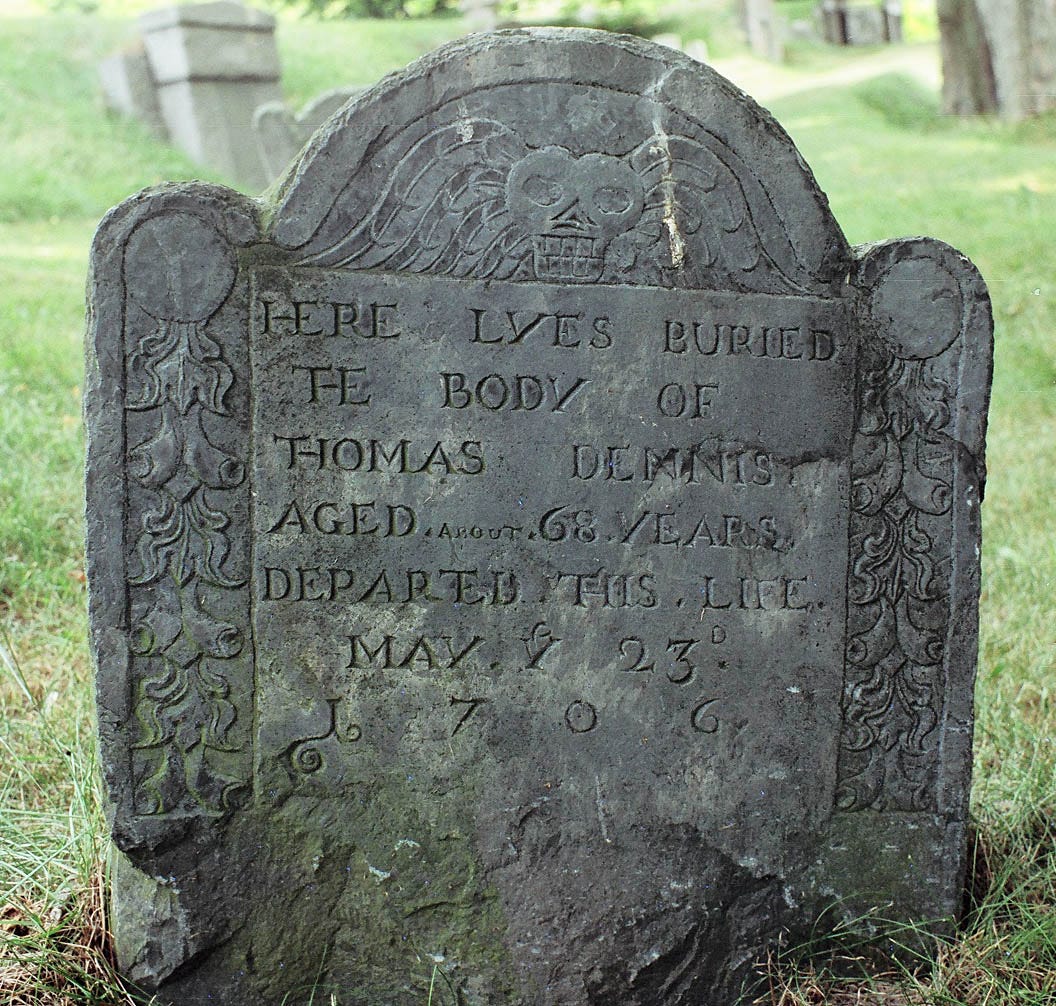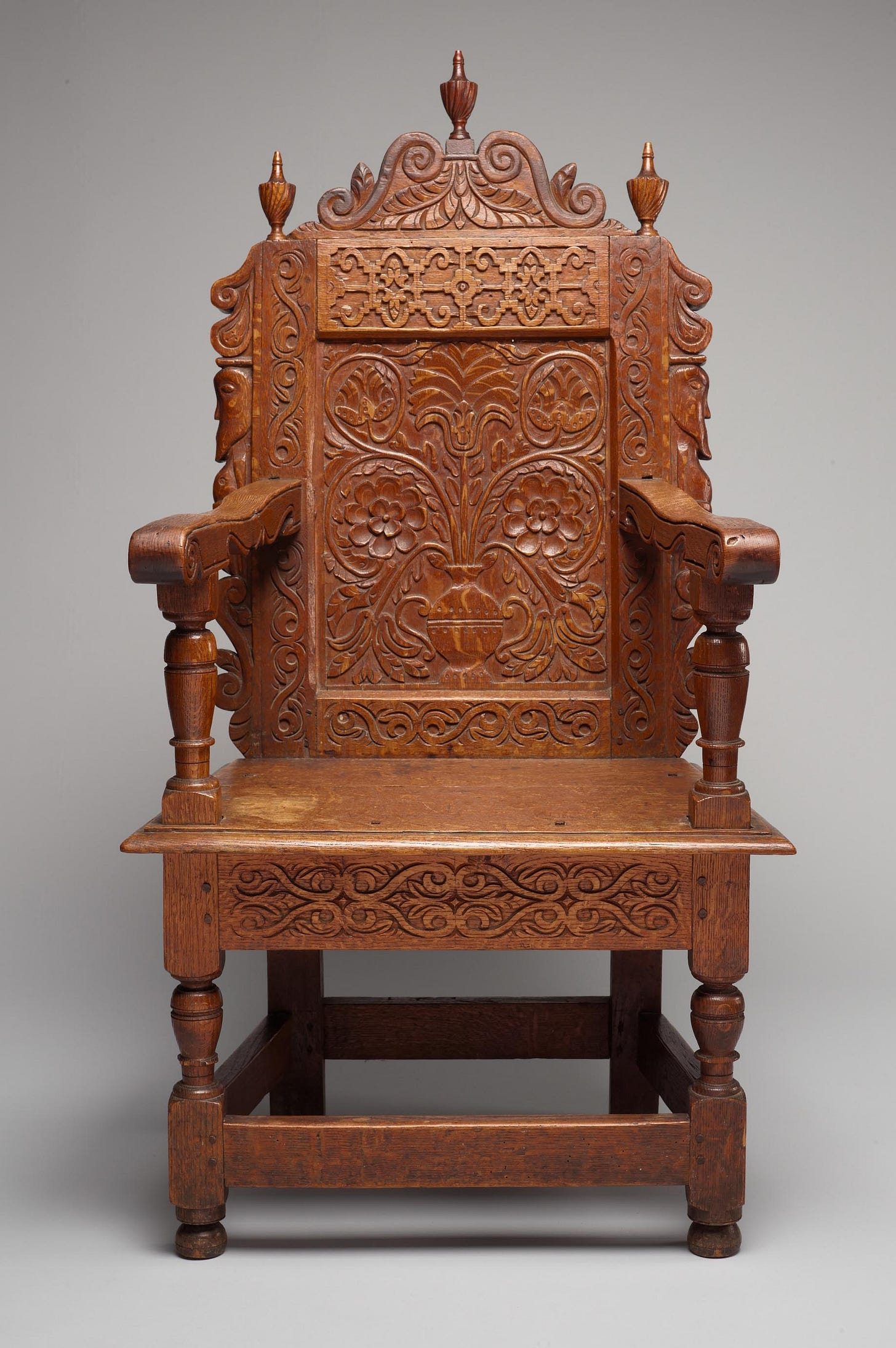The first published writings I did were for an annual journal called American Furniture. The subject was, not surprisingly, 17th-century New England furniture. I still remember the feeling when my first article (co-authored with Jennie Alexander) was published in 1996 - for an art-college dropout, it felt like I had really done something! JA & I, under Bob Trent’s guidance, had been working on the research and writing for quite some time at that point - if I remember correctly though there was quite a backlog of articles for the journal which began in 1993.
Over maybe 15 years I wrote a few things for them, some solo, some with Trent and/or Alexander. The work was great fun; studying the artifacts, researching period documents and records, trying to unravel the histories behind these objects. Lots of time went into each article. At the time, I was working in a museum, so that sort of research blended well with my day job.
I miss that research aspect of my work - but because it doesn’t pay well at all, I’ve not pursued it since quitting my museum job 10 years ago. But this blog, thanks to the paid subscribers, has created a place for me to revisit my research work and publish some of it myself. But I’m approaching the subject like Mark Twain did his autobiography - whatever strikes my fancy at any particular point gets my attention. So no order to these entries. My most recent ones were about some Connecticut furniture, but today it’s about Thomas Dennis, joiner/carver of Ipswich, Massachusetts.
I’ve never written a full article about what Bob Trent called “The Thomas Dennis Problem” in an anthology he edited in the mid-1970s. But some of what follows is drawn from a short piece I once wrote about this material. There’s a slew of reference books and articles cited - I’ll tuck them at the end.
Irving Whitehall Lyon pioneered some of the techniques still used today in furniture studies; his preface to The Colonial Furniture of New England (1891) outlined his approach to the subject:
About the year 1880 the writer commenced a somewhat systematic study of this old furniture. This included among other things an examination of specimens; an inquiry into what others knew or had written; and an examination of old records, such as inventories of household furniture, old newspapers, account books, and diaries. The furniture of England and Holland for the corresponding period was also studied to some extent.
Both Irving W. Lyon and his son Irving P. Lyon relied on probate records to study seventeenth-century furniture and its makers. Irving P. applied his father’s methods to link the carved furniture of Ipswich, Massachusetts, to Thomas Dennis, a joiner who lived in Ipswich between circa 1667 and his death in 1706. Lyon outlined the descent of several pieces in the family, then made connections between these and other related works. Ultimately, he went overboard with this attribution and credited Thomas Dennis with nearly every piece of Essex County furniture, but the first two sections of his study are still mostly valid.
Once Lyon had gone to an extreme with his theories concerning Dennis, other scholars picked up the material and the story unfolded from there. Homer Eaton Keyes and Helen Park both published follow-up articles in Antiques, refuting parts of Lyon’s work, and expanding the knowledge base concerning Essex County furniture of this period. Helen Park’s 1960 article “Thomas Dennis, Ipswich Joiner: A Re-examination,” identified William Searle as a joiner in Ipswich and cited his birthplace of Ottery St. Mary, thus establishing the Devon-to-Ipswich link.
Trent’s introduction to the compilation of these articles pulled out a quotation from Keyes’s article that is worth repeating:
“an artist trained under the old apprentice system . . . could never quite escape from his conditioned self. Certain grooves worn in his brain by years of practice would force him, unwittingly and unvaryingly, to treat minor forms in a virtually identical manner.”
Park’s article also cited records pertaining to William Searle, such as his death in Ipswich in 1667, and found that the Searle family genealogy recorded his birth in Ottery St. Mary, Devon. Searle’s birth date is variously given as May 28, 1611, or January 23, 1634. We know that a William Searle married Grace Cole in Ottery St. Mary on April 12, 1659. This couple immigrated to Massachusetts in 1663, settling first in Boston, then in Ipswich. Once Park brought Searle into the mix, much ink was spent trying to sort out the sequence of events. The main points are Searle’s death sometime before August 16, 1667; (the date of his probate inventory); and the marriage on October 26, 1668, between Grace (Cole) Searle, widow, and Thomas Dennis, joiner, who by then had moved to Ipswich, where he spent the rest of his life. There has yet to be found any additional link between William Searle and Thomas Dennis, other than a deed of sale dated September 26, 1663.
Keep reading with a 7-day free trial
Subscribe to Follansbee's Substack to keep reading this post and get 7 days of free access to the full post archives.





